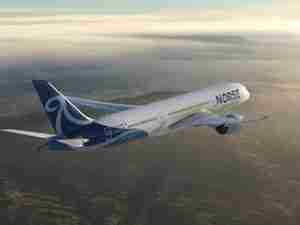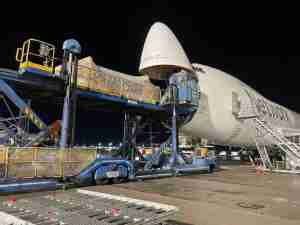Airbus SE is advising customers they’ll face longer waits for its newest jetliner, the long-range A321XLR, according to people familiar with the matter, adding to pressure on carriers trying to source planes to meet surging demand for travel as Covid fades.
The delays vary by airline, with deliveries typically sliding by a matter of months, the people said, asking not to be identified because the details are private. Airbus is contending with production snarls in its factories and regulatory scrutiny of a new center fuel tank that gives the narrow-body jet the range to cruise from London to Miami, or Tokyo to Sydney.
Airbus had originally targeted bringing the XLR to market by 2023 but pushed back that timing to mid-2024 as European and US regulators probed a potential fire hazard posed by the novel feature. The jet will hold an additional fuel tank that will be fused into its structure behind the wheel bays and directly under passengers’ feet. Privately, buyers are fretting the regulatory review could push back the plane’s market entry to as late as the end of 2024 or early 2025, some of the people said.

Speaking at a lunch in Washington on Tuesday, Airbus Chief Executive Officer Guillaume Faury said the XLR’s entry into service was still on track for the second quarter of 2024, in line with what the planemaker said during its annual earnings release last month.
The fresh delay comes as airlines are grappling with shortages of the latest, fuel-efficient jets, and as Boeing Co. and Airbus struggle with a dearth of engines and other parts. Both planemakers have fallen behind schedule and delays are particularly bad for the A321 family, with some of those jets arriving nine months late, Air Lease Corp. executives said during a Feb. 16 earnings call.
The XLR has emerged as a popular replacement to Boeing’s out-of-production 757, garnering more than 500 orders from buyers like American Airlines Group Inc., JetBlue Airways Corp. and United Airlines Holdings Inc. The narrow-body plane is designed to cruise up to 4,700 nautical miles (8,700 kilometers) while burning 30% less fuel than its predecessors.
The European Union Aviation Safety Agency in January 2021 flagged the fuel tank’s unique design, integral to the fuselage itself, as posing a particular risk in the event of fire, and hence presenting a “special condition” requiring a safety fix in order to protect the passenger cabin. The US Federal Aviation Administration approved similar special conditions for the A321XLR in December.








